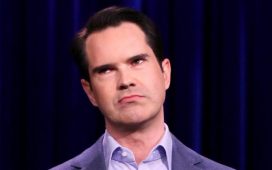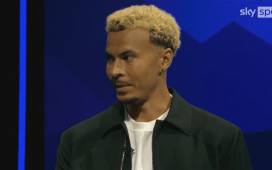The sky was still dark on a Sunday morning in late March when renowned filmmaker Ken Burns climbed onto a bus in Nashville — the epicenter of an American art form in which he and his team had immersed themselves for the better part of a decade.
Burns, along with writer and co-producer Dayton Duncan and co-producer Julie Dunfey, set out on a multiday trek across the state that produced many of the stories and songs that had become part of their latest project, an epic 16-hour documentary series simply titled “Country Music.”
After eight years of work, including 175 hours of interviews, it was time to show parts of the series to people in small towns across Tennessee — places like Cookeville, Bristol and Sevierville, the hometown of Dolly Parton.

For Burns, Duncan and Dunfey, the journey had become personal. Together, they raised money to fund the project, worked to determine a historical time frame, solidified a cohesive storyline, conducted interviews, gathered photos and videos, spoke to 101 people — 20 of whom have now died — shed tears over the loss of Merle Haggard and searched for the genre’s genesis.
On the way, they realized country music is far more vast than the sum of its visible parts.
“It’s been this all-encompassing story,” Burns said. “I don’t think we were prepared for the dividends it would pay in (learning about country music) and understanding how much it was about us, both the U.S. and the intimate us. I like the way the stories we tell ricochet between those things.”
Burns grew up in Michigan and considered himself a child of rock ‘n’ roll. Before making the documentary, his relationship with country music was nearly nonexistent. After spending close to a decade excavating its history, meeting its people, listening to their stories and hearing its songs, Burns said country music is now all that plays on his radio.
As the sun started to peek over the rolling hills of the Cumberland Plateau, the bus headed east toward the great Smoky Mountains of eastern Tennessee and the trio of friends shared the behind the scenes of “Country Music.”
The documentary will begin airing at 7 p.m. CDT Sept. 15 on PBS.

What drew you to country music?
Ken Burns: We are always drawn to stories that talk about who we are as a people. I’ve always said we’ve made the same film over and over again, which is, “Who are we?” So, we’re always looking for American history firing on all cylinders. I had a friend in Dallas, and one morning I was staying at his house. He said, “Have you ever thought about country music?” And I said, “Oh my God, of course.” It’s been in the head and on the list, but it had never dropped down to the heart.
We were working on another idea, but it suddenly disappeared in favor of this. And now, eight years later, it’s been this all-encompassing story. You want to make sure that when you say yes to something, it’s a good topic. And this is a really good topic. This is as good if not the best we’ve ever done.
Where did you start listening?
Ken Burns: I was trying to figure out where it began. Dayton started talking about (influential talent scout and recording engineer) Ralph Peer in Atlanta. I thought we’d go back centuries — and we did go back centuries — but Dayton had the genius to figure out that you could start at a place when this music was first being recorded and then at some point take a timeout and then go back and collect all of the things. All of the things are the musical traditions, mostly the British Isles and Africa because when you have the banjo, as Ketch (Secor of Old Crow Medicine Show) points out in the film, it’s an African instrument. For us, it was going back and trying to figure out what the beginning is.
There was a wonderful moment in the interview we did with Dolly Parton where she starts singing “Barbara Allen (Pretty Fair Maid),” which I also heard from my father and my grandfather. And here I’m listening to Dolly Parton sing it. You realize, she said, it was carrying the news. So, it’s a news that is communicated in the moment between people. And, the news comes down through generations. The songs are history, and that’s what we’ve been trying to do all along.
How did you decide on a time frame?
Dayton Duncan: As Ken said, we were struggling on how to start this because country music is not a music, it’s many musics with many different roots. They’re all important roots. I picked the moment when Ralph Peer comes to Atlanta in 1923 predominantly to record so-called race music. He was running out of people to record, and he’s told there’s this guy who is popular on this brand-new thing they have in Atlanta — it’s called a radio station — and it’s Fiddlin’ John Carson. He said, ‘Bring him in.’ And it became a hit. It was one of the first times this kind of music got recorded to be popular. I realized if you start the story there, you can ask, “Where did all this music come from?” Then you can go back.
Previously, this type of music that had just been transmitted in the front porches or in the living rooms or fields can now reach a lot more people, and that accelerates the cross-pollination of music. That got us started in 20th century.
And how did you know where to end the story?
Ken Burns: We are in the history business. The journalist and the critic are going to be the better judge of the present and near past. So, we need to stop. It always causes endless grief because whether it’s baseball or jazz or country music, you’re always stopping 20 or 25 years away from the present. For many people, their relationship to it is just that present moment. Finding the moment of Garth Brooks’ extraordinary success in the ‘90s was a way to say, “We can put a cork in this bottle here.”
We are covered in the scars of what was left out.
Dayton Duncan: It really is the difference between journalism and history. Each one of those decisions we made, there are 12 or 20 people, stories and moments that we can’t tell. But the advantage of the arm’s length of time separation gives you a little more confidence of, “That one was the important one.”

What makes you cry in the film?
Ken Burns: A lot of stuff. Merle Haggard makes me cry, his story. Understanding how certain songs were written, whether it was Hank Williams tunes or Kris Kristofferson or Dolly, finding out in our last episode the relationship between Dwight Yoakam and Buck Owens and how Dwight felt so protective of Buck and the need to carry his message unvarnished into a modern world made me cry.
You find out why Dolly writes “I Will Always Love You” and that makes “I Will Always Love You” dimensionally more important because it was contained in story and not just hearing it. We can all agree it was one of the great songs. But when she’s telling you why and how she wrote it, it really explodes.
Every country music person is solving problems for us, and it goes back to Jimmie Rodgers. He’s solving problems for us. Ketch (Secor) is solving problems for us, saying, “I’m willing to expose myself to this pain or this emotion.” That is powerful. They do some heavy lifting for us.
I said in the first film that we were emotional archaeologists. That means we are interested in excavating not just sentimentality and nostalgia, but something that really matters. All of the films have those moments, but I was unprepared for how many there were and how powerful and how deep they are.
This is the music — three chords and the truth. That is taking elemental stuff of life and combining it with relatively elemental musical presentation and doing what Dayton is saying, where you have two notes and suddenly you know what is going on.

Have you ever lost so many sources before a project is released?
Ken Burns: If we have the opportunity to have a subject where some people are alive, we work our way down the actuarial table. We go to the oldest first and talk to them because these are long processes of very many years. But we’ve never lost anything like we’ve lost in this film. Even since the beginning of the year, we’ve lost a few people, and it just made us super sad because we’re so close to the finish line. We thought they would be there to stand up when it was finished, and I’m sure we’ll lose someone else before it broadcasts.
But the flip side of that coin is, we have them. Merle is like God; every time he comes on in this film, I feel like I’m hearing someone speaking from the deepest reservoirs of knowledge about this music. He’s so generous, and then when his story catches up to him, he’s so good and honest.

Emmylou Harris says, “You want to know what country music is? Take any Merle Haggard record, it doesn’t matter. Put the needle on any track. That will be the beginning of your education.” He’s in almost every episode helping to explain the mysteries.
Dayton Duncan: We just wanted them to be there to see what we made of their stories. There are 175 hours of interviews for a 16-hour film. (All of the team’s footage and research will be donated to the Country Music Hall of Fame and Museum.) We maybe used six hours of interviews. There’s a lot of stuff that future students of the genre will have the benefit of seeing or listening to it or reading the transcript.
What do you hope viewers take away from the experience?
Julie Dunfey: People will be brought back to something that they remembered, but I also think it will compel people to take a deeper dive. Me coming to Merle Haggard, I just went so deep and then I wanted to know more about who influenced him. I think the film will draw people in.
Ken Burns: You are talking about a music that started out tiny and insignificant in the spectrum of American music that is now the dominant music of the United States of America. Country music isn’t geographical. You can’t say it’s just one type of person. This is exploding preconceptions and conventional wisdom and then in the end touches my heart.













